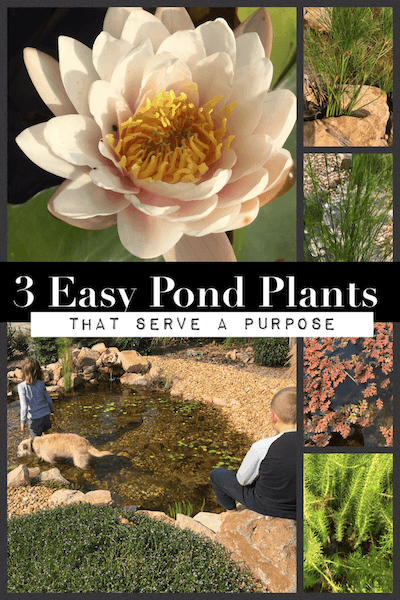
3 easy pond plants that look great and serve a purpose
Some of you will already know that over the last year and a bit I have gone absolutely pond crazy!! It started with some simple research into my son wanting an aquarium. So in true everyday wit fashion i immersed myself in everything related to keeping fish in an aquarium.
It didn’t take long until i needed my very own larger aquarium. Once I mastered keeping fish in the aquariums I moved on to bigger projects outside.
First I built the wildlife pond and stream, again this was after countless hours of research. Then I got fascinated by aquaponics. At this time of writing, I have built 2 patio systems and am in the process of creating a larger 3 IBC(Intermediate Bulk Container) system. And I’ve just finished a small pond that sits under our living room window.
I’m still not finished! I have a large pond out the back behind the nursery which I’ve linked to our grey water wetland system. And dreams of one day creating my very own recreation/swim pond.
As I said, pond crazy, I’m guilty!!
With all my research and practical experience, these are my ultimate 3 favourites plants to use in a pond.
These are of course conducive to my climate in Gippsland, Australia.
Here we get a few severe winter frosts a year. Overnight temperatures can get as low as -5C(23F). Summer temperatures can be as extreme as 45C(113F) though thankfully not too often.
If any of these projects interest you, click this subscribe link so we can keep you updated with all our endeavours 🙂
Tassel Cord rush -Baloskion tetraphllum (Syn. Restio tetraphyllus)
-Australian native.
-It’s ideal for the shallow margin areas around your pond.
-The foliage is nice and soft.
-Frost hardy.
-Very low maintenance.
This little beauty quickly became one of my favourite pond plants. The fact that it’s an Aussie native really floats my boat.
It only likes the shallow marginal waters of the pond. The soft feathery foliage forms a beautiful looking natural barrier.
I love that the foliage is so soft that the kids can run their hands through it without getting hurt. Some of the other rushes and grasses we were considering had quite sharp foliage that could poke an eye or cause cuts.
In summer it produces tassel flowers that then produce seeds on the ends. The small birds that visit the wildlife pond adore the small seeds.
Tassel cord rush can also be planted into the soil outside the water. This really improves the natural look of the pond.
The roots that extend down into the pond provide extra surface area for beneficial bacteria to colonise. These bacteria are the workhorse of any water body. They process all the harmful ammonia into more fish safe nitrates.
Nitrates are a source of food for plants. So by having a well balanced/planted pond we can create a perfect circle of life. And with it a happy healthy pond.
So for it’s beauty, softness, ease of maintenance and ability to remove contaminants from the water the tassel cord rush is my ultimate go to marginal pond plant!
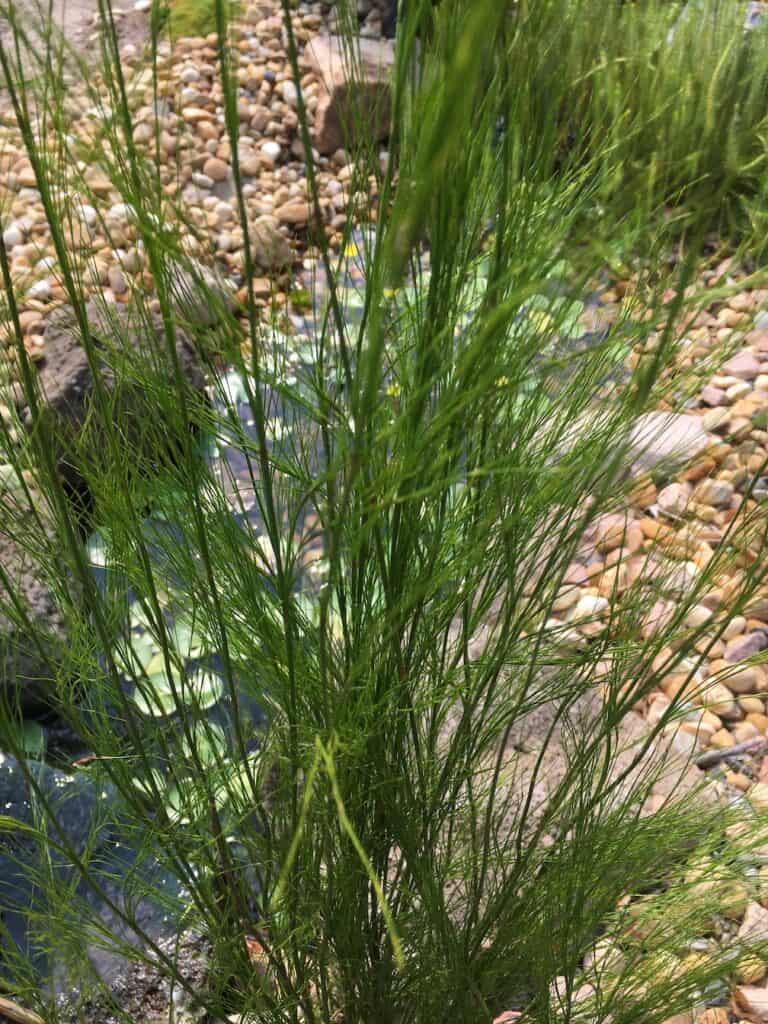
Upright Water Milfoil- Myriophyllum crispatum
-Australian native
-Adds oxygen to the water
-Provides excellent shelter for fish and their babies (fry)
-Fast growing
-Fantastic at consuming excess nutrients
-Propagates very easily
This little ripper is another Aussie plant. The foliage on the upright water milfoil is also nice and soft.
So no problem with the kiddos rolling up their strides and walking into the pond to inspect all the different critters living there. It’s one of my greatest joys when I see the kids enjoying my projects/indulgences. Our fist batch of baby fry in the wildlife pond was very exciting!!
Because a good amount of the plant is under water, it releases oxygen into the water. This is great for your fish as well as the beneficial bacteria mentioned above.
The fact that it’s quick growing allows it to quickly consume excess nitrate in the water. Remember nitrate is great plant food. Algae is also a plant and too much nitrate in the water can create unwanted algae growth.
Upright water milfoil in your pond will out compete the algae for the available nitrate making it a great plant for combating algae growth in any pond.
Algae needs 3 things to thrive: Nutrients, Sunlight and Water. If we can remove one of these things the algae will have a hard time thriving.
Obviously we cannot remove the water from our pond 😉 Sunlight we can to a degree but we can easily add fast growing plants to suck out nutrients (Nitrates) in the water.
It’s important to remember that algae is a natural thing and should be present in small amounts in any pond, we simply want to keep it from taking over.
Because it grows fast from time to time you’ll need to remove excess milfoil from the pond. But thanks to its soft foliage and weak roots this isn’t a hard chore. I find it more a chance to climb into the pond and do some exploring of my own!
Water milfoil propagates very easily! Simply remove a stem and plonk it where ever you want. It will quickly form roots.
This plant can be submerged in 50cm (about a foot 1/2) of water. I used it extensively in the stream that feeds the wildlife pond. Because the stream acts as a filter for the pond the milfoil consumes the nitrates giving me crystal clear, healthy water.
For all the above reasons upright water milfoil is my go to pond plant for overall water health!
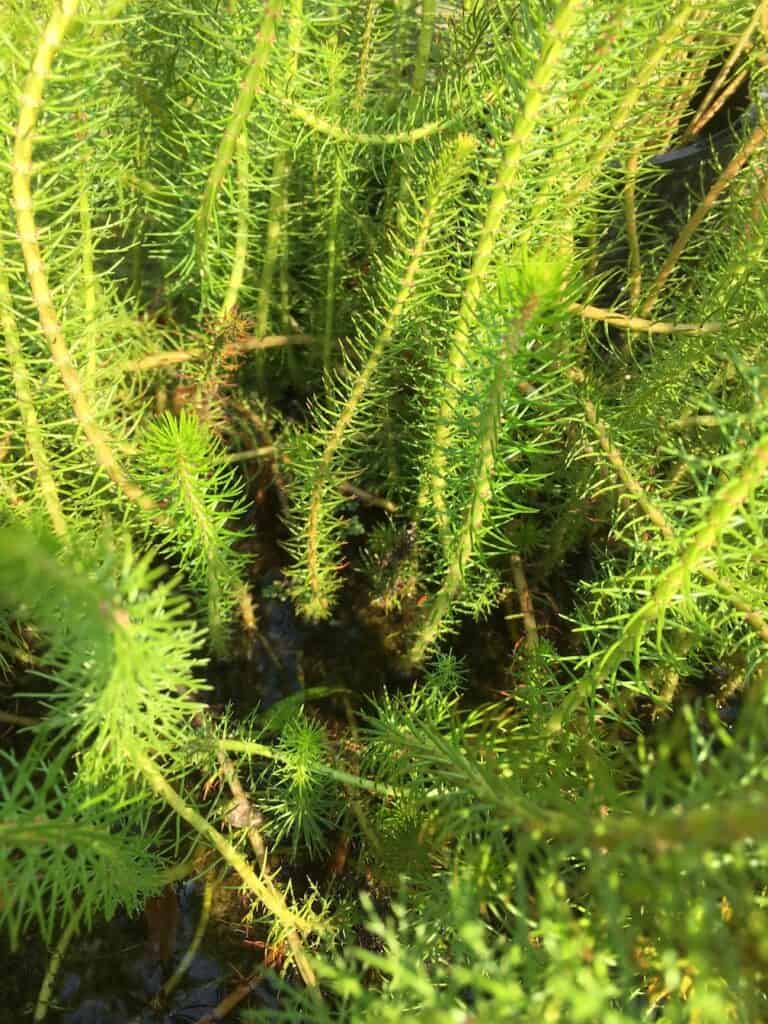
Hardy Water Lily- Nymphaea spp.
-Amazing flowers
-Provides shade
-Cover for the fish from birds
-Even when not in flower they still look cool
-Frost hardy
Come on! Of course there was going to be water lilies on this list! No pond is complete without a water lily. The flowers on water lilies are truly spectacular. The choices of colours are great.
I have a red, orange and pink. You can also get whites, yellows and dark burgundies that are almost black.
Not only do water lilies look great but they also shade the water. Remember that adding shade is another way we can help combat any unwanted algae growth.
The large round leaves also provide great hiding areas for fish, frogs and tadpoles. Around here we have a pesky ibis always on the look out for a quick meal in one of our ponds!
You know, even when the lilies are not in flower, I just love the leaves floating like little boats on the surface of the water. It always amazes me how level they appear with the water, yet the surface of the leaves is completely dry.
As we live in and area that is prone to winter frost if I wanted to grow water lilies they needed to be hardy. These species are hardy because the leaves die off in winter, therefore the frost has no effect.
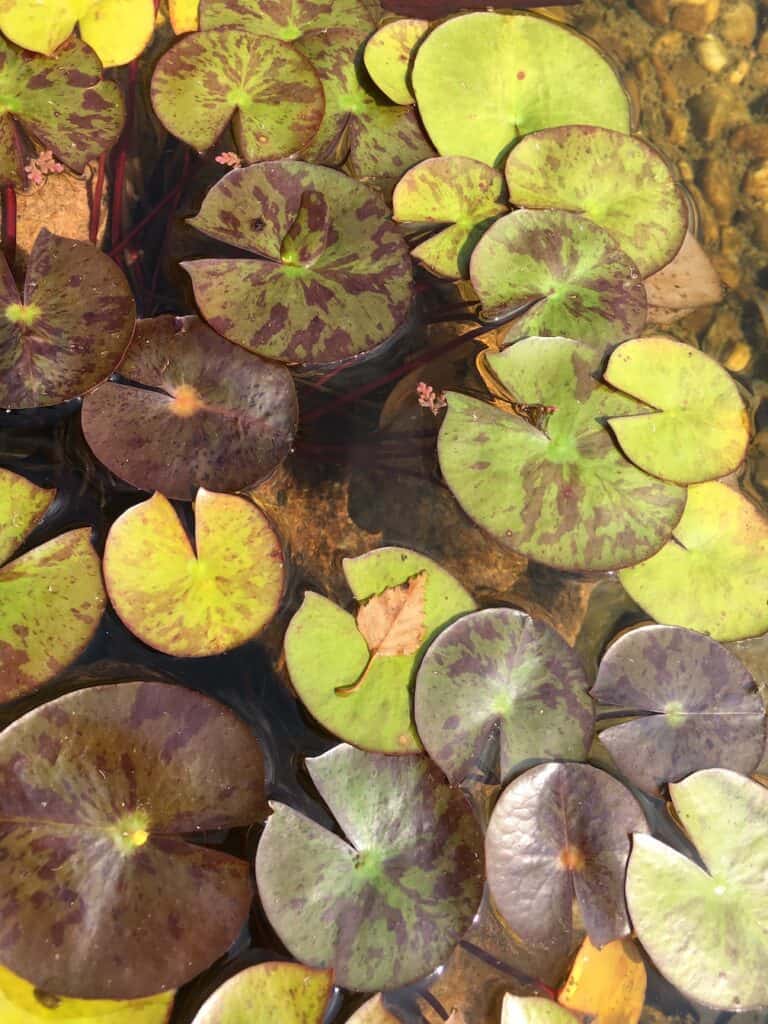
Some other plants we have used in our ponds
Japanese sweet flag- Acorus gramineus
-Evergreen
-Different foliage colours available
-Frost hardy
Japanese sweet flag is a nice small strappy leaved water/bog plant. It only does well in really shallow water. We have used it in our garden stream as part of the wildlife ponds filtration system.
Would be a great little plant for a bog filter. there are different foliage variations available from dark green to variegated gold and cream.
It is frost hardy which is a requirement for us in our climate.
The reason it’s not in my top 3 is that I find it a little bit too small for our ponds. It only grows to a full height of 30cm (1 ft).
It could be a nice addition to a patio bowl or other small pond.
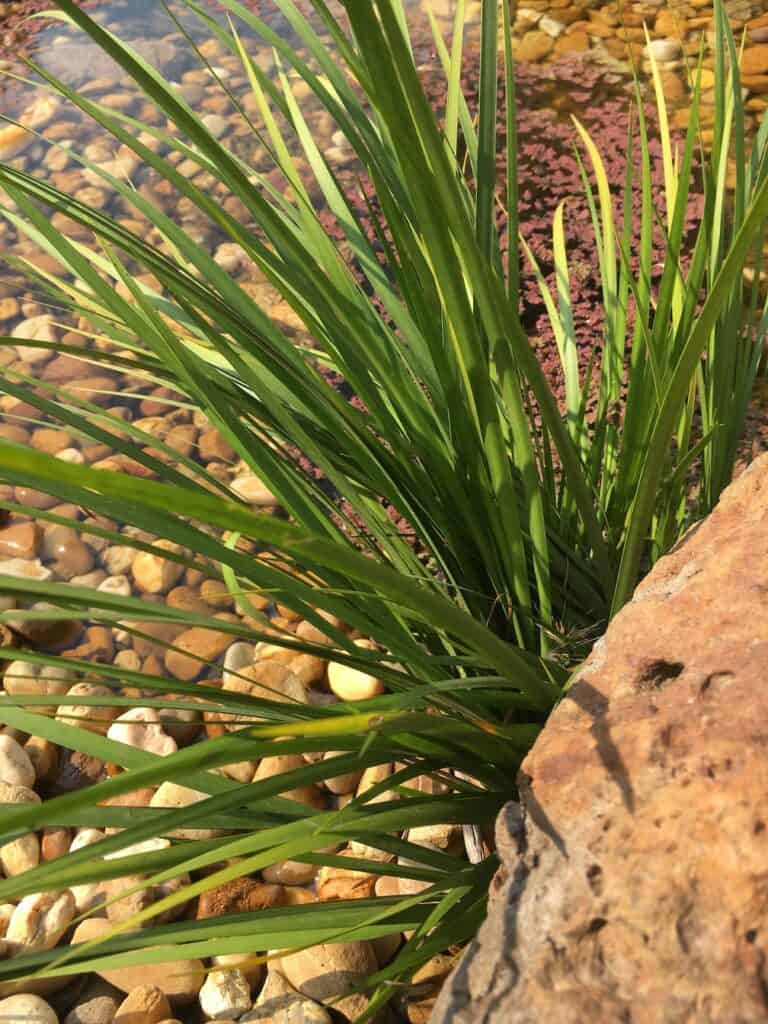
Water ribbons- Triglochin procerum
-Australian native
-Adds oxygen to water
-Provides shelter for fish
-Can grow in shade
Water ribbons is another Australian native. It has attractive strappy green leaves. The leaves start out upright but then sag and float on the surface of the water. Late spring into early summer it produces greeny-white flower spikes.
You can use water ribbons on the margins of the pond or a little deeper. It likes to be in at least 30cm (1ft) of water.
The flowers are supposed to be a good food source for water birds, but so far I’m yet to see any gorging on this alleged delicacy.
Because the leaves trail into the water as they age, they provide excellent shelter for any fish in the pond as well as oxygen.
Another bonus with this little plant is its ability to grow in well shaded ponds.
There isn’t really anything wrong with water ribbons it’s just that for me, I prefer the water milfoil as they both do pretty much the same job.
Of course if your pond sits in a heavily shaded area this would be a better choice than the upright water milfoil.
Little Pharaoh- Cyperus papyrus
- Dwarf variety of the popular Egyptian papyrus
Little pharaoh is a cool looking plant. It’s subtropical so hasn’t done particularly well in our ponds. It produces attractive whispy flower heads. At least i think they are flower heads, they may actually be the leaves, I’m not really sure. But they do look cool!
Our frosts haven’t killed it but it’s certainly not thriving. Definitely doesn’t look great during our winters.
I think it would be a great plant choice for a patio bowl. I do have some half wine barrels that are calling me to turn them into a patio bowl. So don’t be surprised if I do create a couple of wine barrel patio ponds.
I did warn you, I’m pond mad!!!
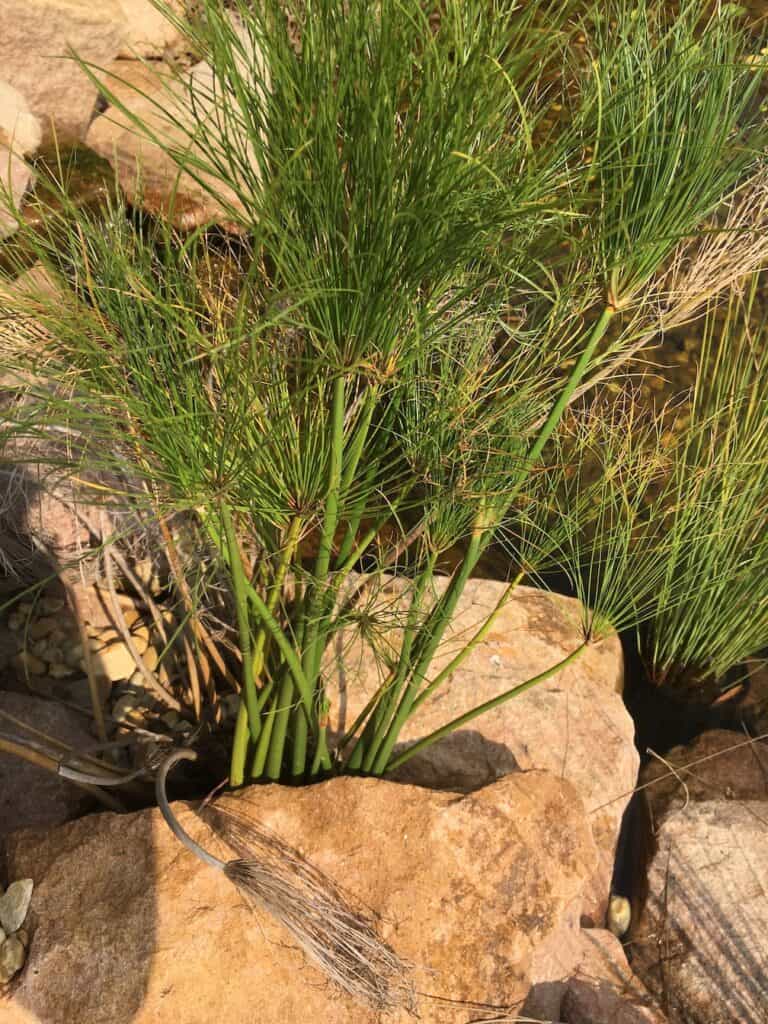
Corkscrew rush- Juncus effusus spiralis
-Unusual foliage
-Does well in shade
-Flowers throughout the year
I purchased this one for its unusual foliage. It looks like most other rushes except that the leaves twirl round and round exactly like a corkscrew.
This is another one that hasn’t done particularly well in our ponds. I suspect this may be because it prefers shade and our ponds receive quite a lot of sun at the moment.
Over time this will change as some of the trees we’ve planted grow. It seems to be doing best in the shallow water of the stream.
I do like the fact that it flowers all year, though they are quite insignificant to look at. But of course they still provide pollen for the bees.
I also find it a little messy as the leaves die off.
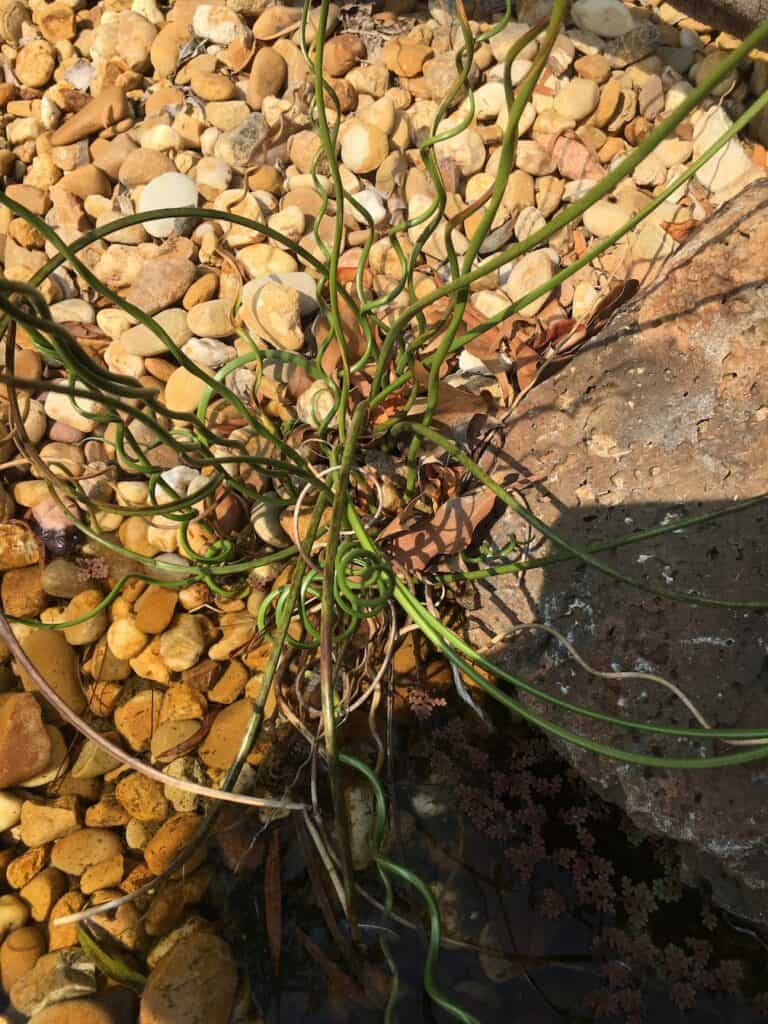
Blue moneywort- Lindernia grandiflora
- Loads of flowers
- Trailing habit
- Doesn’t mind our frosts
- Easy to propagate
I actually really like this one! I think it might have cracked the top 3 if it grew a bit faster.
Blue moneywort flowers constantly in our climate. Even in winter i see it with flowers, whilst not as prolific as throughout the warmer months, but they are still there.
I love the trailing habit, some of it spreads out across the water. The rest trails up and over the rocks at the ponds edge.
It hasn’t been bothered at all by our frosts and it’s so simple to propagate. Just the same as the upright water milfoil, break a piece of and stick it where you want.
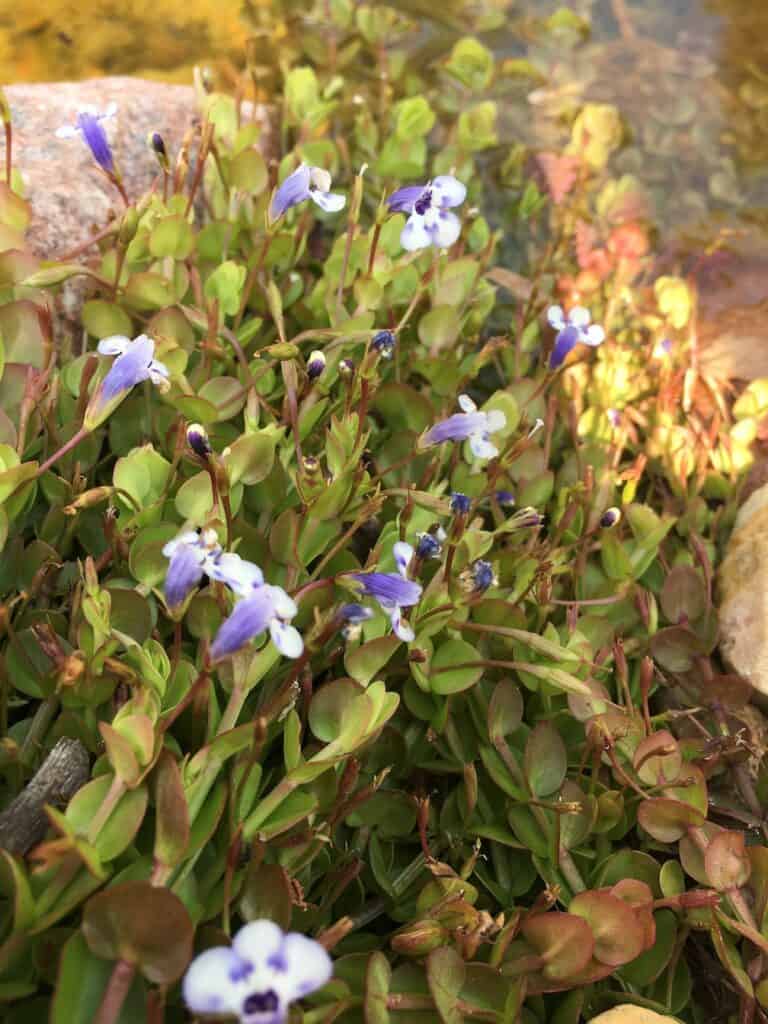
Water fringe- Nymphoides geminata
-Australian native
-Fast growing
-Frost tolerant
Water fringe is also known as Entire marshwort. It’s native to the eastern states of Australia. If planning on growing it outside of Australia, I would check to make sure it is not a declared weed.
We first used this in our our grey water wetland. It has multiplied very fast in the nutrient rich water. I have since moved some up into the wildlife pond where it is also spreading quite quickly.
This is an evergreen lily that can withstand our frosts without a problem. The flowers are not as striking as our hardy water lilies but still very attractive.
They are small and yellow and seem to appear sporadically throughout the year. However, there is a big flush during spring.
The leaves are a nice deep green and sit on the surface like other water lilies.
Frogs seem to love them!!
The only thing I don’t like about this plant is the flowers. But that’s only because I don’t like yellow flowers for some reason. So merely a personal preference.
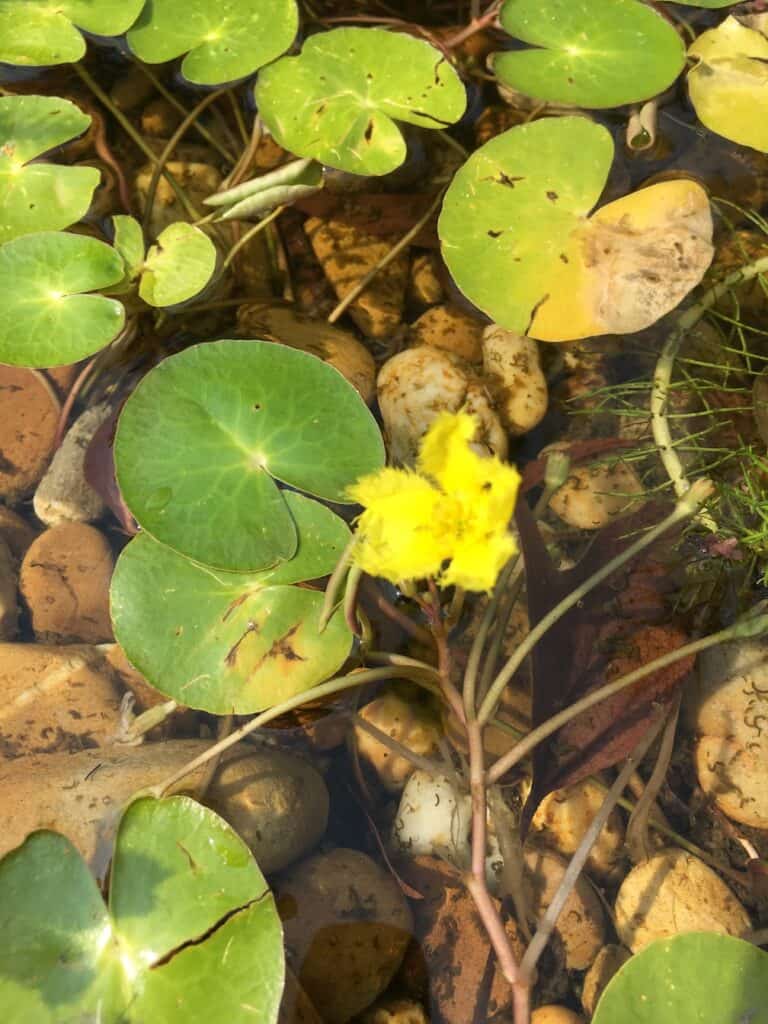
Water fern- Azolla pinnata
-Australian native
-Fast growing
-Water purifier
We used this at first in a small pond we originally had without a pump. We used the azolla to blanket the water surface and prevent mosquitos from breeding.
Apparently azolla has been used in rice patties for thousands of years for this very purpose.
Azolla can double its size every couple days. It’s incredibly fast growing!!
The interesting looking leaves float on the surface with small roots trailing underneath. It can quickly out compete algae of any nutrient overload in the water.
In small confined, stagnant bodies of water it spreads at an alarming rate. I added some to the wildlife pond and stream and it has multiplied a little but certainly hasn’t got out of control.
I suspect that the fish are eating it and keeping it in check.
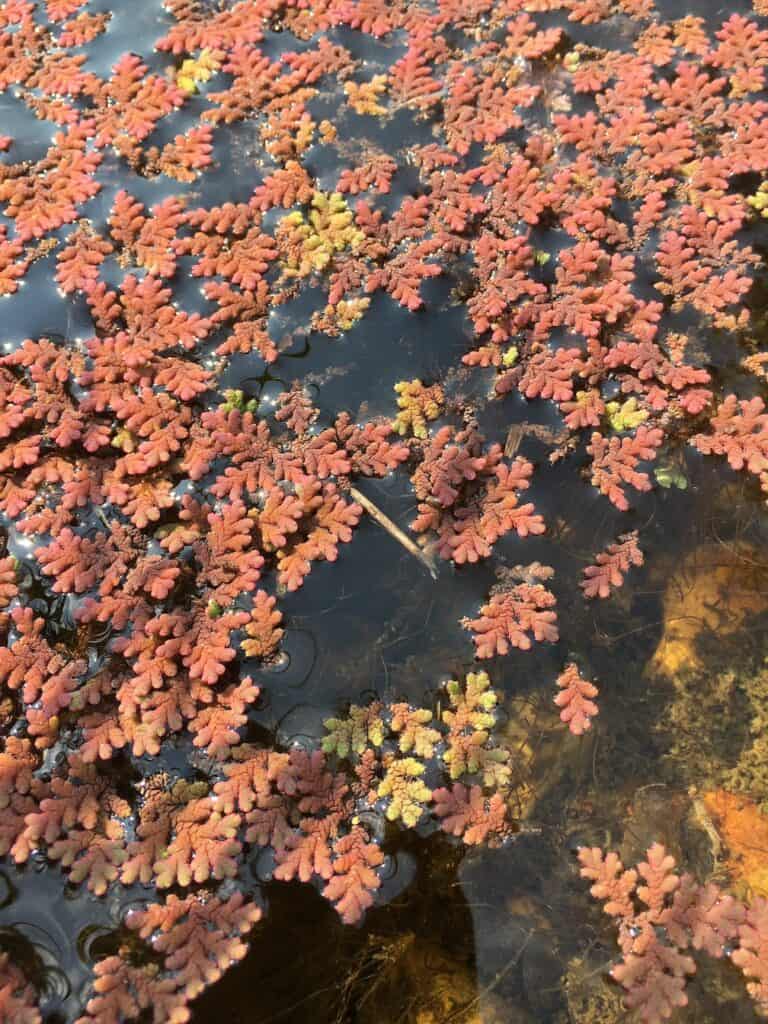
Water cress- Nasturtium officinale
-Fast growing
-Edible
-Water purifier
Petra has just purchased some water cress seeds, so at the time of writing we don’t have much first hand experience.
We have added some to the patio aquaponic grow beds. I’ve seen it used in bog filters when researching pond related topics.
It is supposed to do an excellent job extracting excess nutrients. Again I would guess this is due to its fast growth rate.
I have added some to the new pond under the living room window so we will see how it goes. I’ll keep ya posted!
That’s my 3 favourites as well as a brief description of the others we have used so far. I’m sure there will be more in the future. Please click this subscription link and join our mail list which is the best way to stay up to date with the things we are doing over here at the ‘Whitmore ‘Project’.
Thanks for reading. Happy planting 🙂
